Ripley Entertainment Inc.'s Blog, page 342
May 24, 2018
Everyone Knows What Rosa Parks Did—But Do You Know Claudette Colvin?
Featured in Ripley's Believe It or Not!
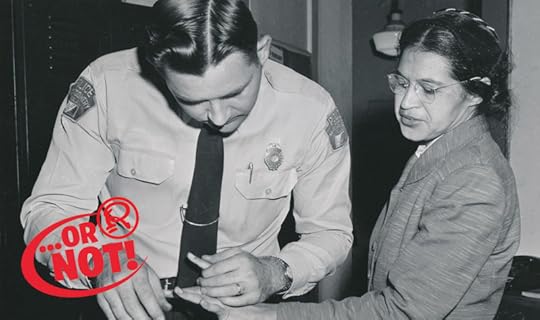
Or Not
In today’s world many misconceptions have been perpetuated—becoming modern day “facts”—when, in reality, myths and hearsay have taken over. Sorry to burst your bubble, but in this weekly column, Ripley’s puts those delusions to the test, turning your world upside down, because you can’t always…Believe It!
Today: The secret story of Claudette Colvin.
Claudette Colvin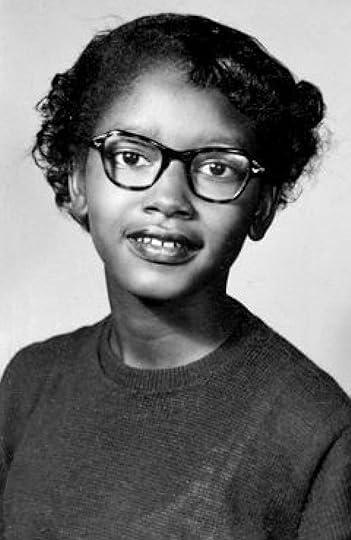
The woman, tired from a long day, was asked by the driver to get up and move to the back of the bus, where the other black people sat.
She refused.
Instead, she continued to sit, taking the spot of a white rider. In Alabama in the 1950s, this was a major offense, and the woman was arrested for it.
Sound familiar? Most would say this is the story of Rosa Parks, the first lady of Civil Rights and the mother of the Freedom Movement.
But most haven’t heard about Claudette Colvin—the young woman who refused to give up her seat nine months before Rosa Parks did.
Claudette was just 15 years old when she took the bus home from high school on March 2, 1955. She and her class had been studying women’s rights activists, and she was filled with pride and a sense of right and wrong. There was no way she would’ve moved on that day, she recalled in the book, Claudette Colvin: Twice Toward Justice, published in 2009 and written by Phil Hoose.

After she refused to move, she was handcuffed by two police officers and her school books fell to the ground.
She became one of the four women plaintiffs in Browder v. Gayle, the court case that overturned bus laws in Alabama.
Strange, then, that even now, few remember her name.

“She was a point person,” says Carl Westmoreland, senior historian at the National Underground Railroad Freedom Center in Cincinnati. “In history, and in life, someone affects something deliberately or circumstantially, and they lock in and play a significant role. Ms. Colvin was important because she was willing to accept the role that was assigned to her.”
Westmoreland explained that the decisions to boycott the buses in Alabama—and to refuse to get up from seats—were strategic ones, handed down from the National Association for the Advancement of Colored People, or NAACP, of which Parks and Colvin were both members.
“When the time came to confront some significant problem, you had people like Ms. Colvin, and a chorus of people who walked rather than ride the bus,” he said. “It was not accidental.”
But there is a reason why she did not become the face of the Civil Rights movement. Westmoreland said there was a bit of hesitancy because there was a question of whether or not Colvin was pregnant, something that was severely frowned upon at the time.
“If you’re pregnant and unmarried, that’s strike three,” Westmoreland said. “But in fact, she was a decent student who later went on to college. But yes, she did go on to have an illegitimate child. So, the state president of the NAACP at the time, E.D. Nixon, called for another to get arrested.”
Enter Rosa Parks, who would replay the scene nine months later, and that story caught on.
“My mother told me to be quiet about what I did,” Colvin told The New York Times in 2009. “She told me: ‘Let Rosa be the one. White people aren’t going to bother Rosa—her skin is lighter than yours and they like her.’ ”
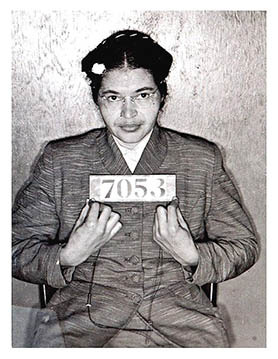
But now Colvin seems to be getting a bit of her due.
“In the black community, we knew about it all the while,” Westmoreland said. “She is a fine woman, and she’s gone on to be recognized for her heroism.”
By Ryan Clark, contributor for Ripleys.com
Source: Everyone Knows What Rosa Parks Did—But Do You Know Claudette Colvin?
CARTOON 05-24-2018
May 23, 2018
Bloodless Dueling In The Olympics With Wax Bullets
Featured in Ripley's Believe It or Not!

Dueling has been a curiosity of human culture throughout history. Reaching peak popularity in Europe as feudal lords, royalty, and the aristocracy lived out their own version of chivalry, dueling was often banned to keep people from killing each other. Thankfully in 1908, a form of bloodless dueling was introduced to the Olympics using wax bullets.
History Of Dueling
There is no shortage of extraordinary duels worthy of “Believe It or Not!” status. In 1808 for example, two wealthy Frenchmen fought a duel in the skies of Paris for the love of a young dancer, firing at each other with blunderbusses from air balloons.
A woman could duel a man in Medieval Europe as long as he stood in a 3-foot deep hole, only used a club, had a hand tied behind his back, and the woman was armed with rocks. In the case of a woman-on-woman duel, the first fight was over flower arrangements, and both women were topless for what was explained as “safety reasons.”
Not just isolated to Europe, India, Indonesia, Japan, and the Philippines all have a rich history of dueling culture. In most cases, duels were meant to be fought on equal terms, with both using the same weapons.
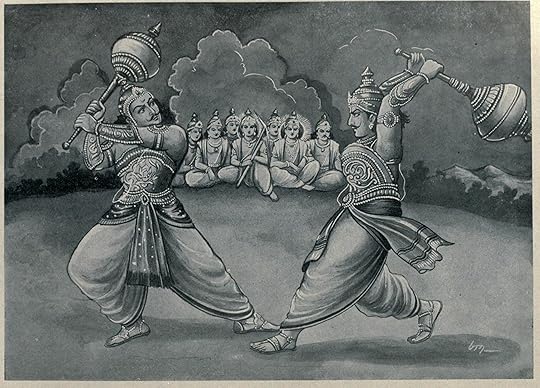
Outlawed
As early as the 13th century, laws against dueling were put in place. As duels often took place between the nobility, people quickly realized that this could be disastrous for nations. The U.S. founding father Alexander Hamilton, for example, was killed in a duel by Vice President Aaron Burr. Burr had to flee the country, and America’s fledgling state bank was thrown into chaos.
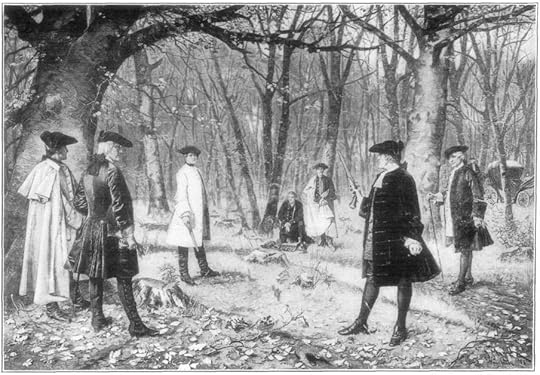
By the turn of the century, duels were rare, but one group was determined to change that. The sport of bloodless dueling was invented.
Wax Bullets
Duelists wore heavy clothes and metal mask with goggles. Their pistols were modified with handguard to protect their fingers, and they fired wax bullets instead of lead. The pistols were only primed to launch the tough ball of wax and didn’t even use powder—in order to reduce velocity.

Despite these precautions, injuries were common, with one journalist who tried the sport losing the skin connecting his thumb and index finger. He reported that even years after the incident that it pained him to write for long periods of time. A big game hunter and shooting champion, Walter Winans contended the spirt was dangerous and potentially fatal.
“Spectators might lose their eyes by a stray or ricochet bullet.”—Walter Winans
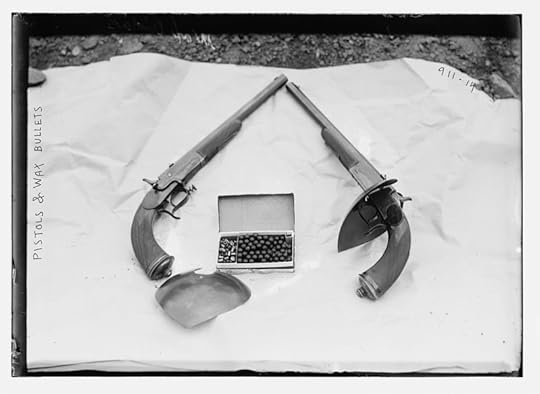
The wax bullets themselves were hard for anyone to distinguish from real bullets, and officials were constantly worried a mix-up would prove fatal.
Regardless of the risks, dueling with wax bullets was featured in the 1908 Olympic games. It was only an exhibition sport, so no medals were awarded. Despite its exciting danger and curious suits, it never picked up popularity and was never featured again.
CARTOON 05-23-2018
May 22, 2018
Skull Drum From The Mountains Of Tibet
Featured in Ripley's Believe It or Not!
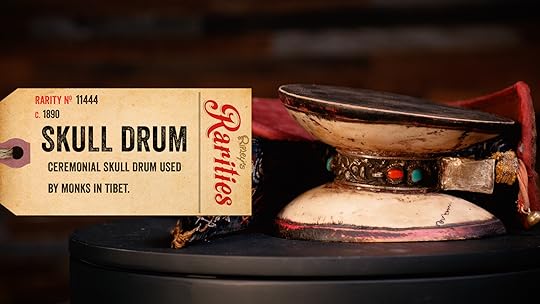
A relic of monastic rituals in the mountains of Tibet, this skull drum is made from the tops of human heads. Called a damaru, these double-headed drums were used in a variety of mantric ceremonies, but were not always made from bone. Typical damaru were made from wood or metal, with bone being a rarity.
The tops of a human cranium were cut off and joined together by a metal band, then decorated with carvings and semi-precious stones before being attached to an ornate tassel. The markings on the metal ring and flowing tassel were often significant to a particular mantra. In Hindu tradition, this type of drum was symbolic of Shiva, the destroyer and transformer who serves as a principal deity in the faith.
Combining the bones of two people together, one side of the drum was usually female, and the other male. Beneath the skin stretched across the inside of the skulls, special inscriptions or mantras were either carved or written out in gold. The knit tassels attached to the drum would strike the drum gently as it was turned back and forth. The small poms were representative of eyeballs.
Much like the skull bowls in the Ripley’s collection, the bones used in these holy instruments weren’t likely from deceased monks themselves, rather collected from sky burial sites.. Tibetans regarded the skull as the seat of intelligence, and it was thought that their ancestors’ wisdom could be inherited from the use of skeletal damaru.
Rituals using the drums would last for hours and were usually aimed at overcoming the ego. In group settings, a chant leader would use the drum to keep type, using it as a sort of conductor’s baton to lead massive groups.
CARTOON 05-22-2018
May 21, 2018
Fit for a Queen: The Bizarre Burial of Queen Victoria
Featured in Ripley's Believe It or Not!
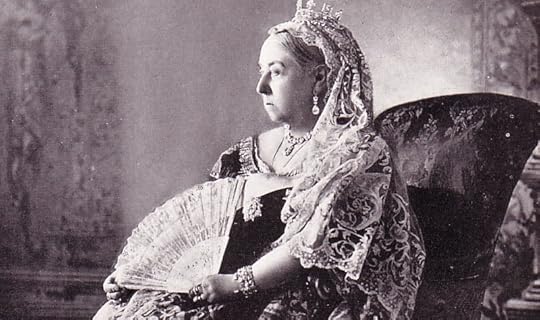
It was a conversation with the poet Lord Tennyson that partly inspired the colors of her funeral.
Frustrated that funerals were mourned in black, Tennyson told his friend Queen Victoria that he thought they would be better celebrated in white. In fact, his own funeral featured white—just like the Queen’s, says Dr. Sarah Richardson, a professor in the Department of History at the University of Warwick in England.
“She wore all white as she had requested a ‘white’ funeral—so the dominant colors were white, purple, and gold rather than black,” Richardson says. “Her coffin was also draped in a white pall.”
Of course, that was far from being the most interesting thing about her funeral. The Queen was 81 when she died on January 22, 1901. She had ruled for more than 60 years. Some of the aspects of her funeral could be seen as odd, while others were kept secret—even from her own children.
As Richardson notes, the Queen requested a number of items be included in her coffin, among them a “host of rings, chains, bracelets, lockets, photographs, shawls, letters and casts of hands.”
Casts of hands?
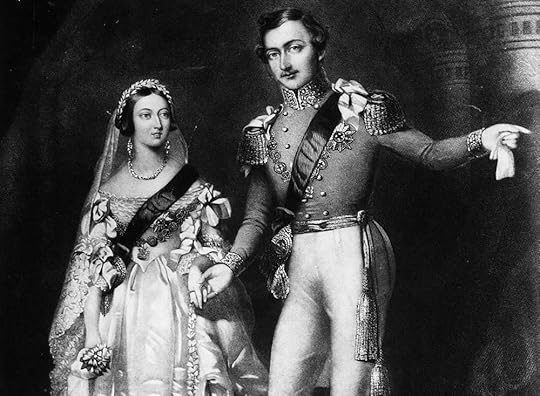
“She was buried with (her deceased husband) Prince Albert’s dressing gown and a cast of his hand and a cloak embroidered by her daughter Princess Alice, who pre-deceased her, dying in 1878,” Richardson explained. “She was also buried with (her reputed lover) John Brown’s photo, lock of his hair and his mother’s wedding ring. These primarily served as earthly reminders of her family and close friends.”
But Richardson noted that many families, whether Royal or not, practiced these traditions.
“Yes, many people left similar requests to be buried with locks of hair from their children, letters, photographs etc.,” she said. “Although it is unlikely most went to the extreme quantities that Victoria requested, it was common for items to be placed in the coffin.”
Yet her ceremony also struck some as odd. For instance, everyone was dressed in white. It is thought this was only partly due to Tennyson’s suggestion, and partly due to her devotion to her deceased husband, Albert, whom she is said to have mourned for 40 years.
“It could also be to contrast with the fact that she wore black for much of her life after Albert’s death and thus wanted to make a statement,” Richardson noted. “She was buried in her wedding dress—another sign of commitment to Albert.”
Still, much of the ceremony was cloaked in secrecy, with her requests carried out by her personal physician, Sir James Reid.
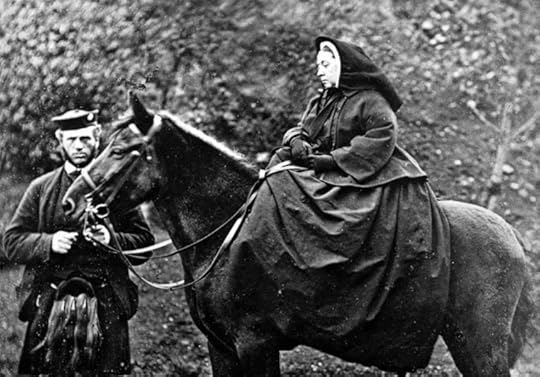
John Brown attending the Queen.
“It was he who secretly put John Brown’s photo and lock of hair in the coffin,” Richardson said. These items were kept secret from everyone, even her children. “In some ways Victoria went against convention—there was no lying in state and she was buried at Frogmore rather than Westminster Abbey.
“She controlled rituals around her funeral in similar ways in which she controlled other aspects of her life when she was alive,” she continued. “She went against convention.”
By Ryan Clark, contributor for Ripleys.com.
Source: Fit for a Queen: The Bizarre Burial of Queen Victoria
CARTOON 05-21-2018
May 20, 2018
CARTOON 05-20-2018
May 19, 2018
CARTOON 05-19-2018
Ripley Entertainment Inc.'s Blog
- Ripley Entertainment Inc.'s profile
- 52 followers









